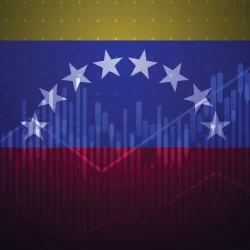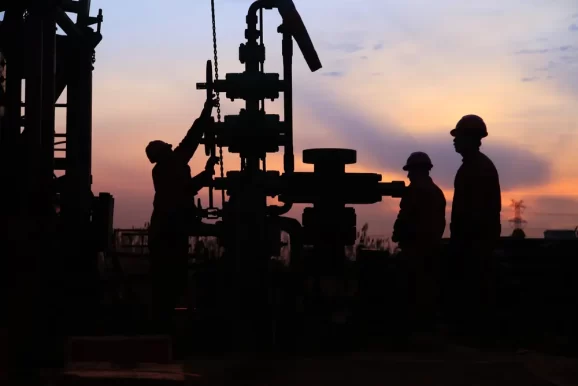The new economics behind Venezuela’s upturn

Elias Ferrer casts an eye over Venezuela’s recent shift in economic fortunes, and speaks to experts about the various contributory factors
The Venezuelan economy seems to be picking up from the economic collapse experienced over the last decade. Finally, in 2021 and 2022 we saw positive growth, and in the first three quarters of 2022, the economy grew by 17%, although it remains well below pre-crisis levels. The oil-dependent nation has benefited from the rising oil prices resulting from the war in Ukraine, but that is not the only factor. Crucially, what has stunned foreign reporters is the emergence of an upper class and high prices in shops.
This is explained by Venezuelan professors Ricardo Hausmann from Harvard and Francisco Rodríguez from Denver University, two economists who have worked in government and advised opposition leaders including Juan Guaidó and Henri Falcón. According to Professor Hausmann, the upturn of economic activity is limited to East Caracas and to those with foreign incomes. And due to the prolonged crisis, around 5 to 7 million people have left the country, creating remittance inflows of $4.2 billion in 2022.
Professor Francisco Sanabria and brokerage house executive Eleazar Jiménez explains that these remittances have caused a key shift in the national economy: dollars used to only be accessible by the wealthiest in society, but are now available to the general population.
The oil-rich nation is still heavily dependent on imports, and President Nicolás Maduro eventually removed import tariffs on food and loosened controls on the dollar. The measure was welcomed by many Venezuelans, because at the time the shelves were empty. And as a result, many shops, known as bodegones flourished, selling imported goods. Supermarket chains also resurfaced.
These burgeoning shops have two key characteristics: first, that prices are set in dollars, and consumers can pay in bolivars, but on the day’s rate – which is often announced at the counter; secondly, products are often not marketed to be sold in Venezuela – they are the exact items to be found on supermarket shelves in the US or Western Europe. This is the result of conventional import routes being disrupted through sanctions, while being facilitated by the removal of food tariffs. In 2013 (the last year where there is complete data) 23% of goods came from the U.S., 10% from Brazil, and 5% from Colombia. In 2019, Venezuela had no official, direct transport connection with any of these three countries. And only now are Venezuela’s neighbours reopening borders to the country.
Alongside the bodegones, brokerage house executive Eleazar Jiménez emphasised how the finance sector has reactivated. The government has allowed for hard currency bank deposits and, more broadly, for a de facto dollarisation of everyday operations. While settlement of trades is done in bolivars, values are indexed on the dollar rate, protecting investments. Thanks to this provision, Venezuela’s main equity index grew in 2022, outperforming most in the Americas. Last year, state firms also issued fresh minority shares into the stock market – a sign of confidence and optimism. Even many foreign investors are still holding their positions, hoping for a rebound.
“Fixed income has also presented a profitable avenue” Jiménez explains. “Whereas bonds issued by the state have been defaulted for years, debt in the private sector is offering good returns to national investors. This profitability is ensured by the indexation with inflation and currency devaluation. Trusts and savings banks are key investors in fixed income, as they must seek low-risk assets by law.” Jiménez believes the best-faring sectors in Venezuela’s capital markets are finance, manufacturing, and agriculture.

Oil: as vital as ever
Oil production has also picked up, a result of high prices created by the war in Ukraine. The Biden administration has prompted negotiations with Maduro, by allowing Chevron to renew its operations. The first shipments of Venezuelan oil have arrived in US terminals earlier this year. Simultaneously, the state has promoted other sectors, especially another extractive industry: mining.
Oil remains the largest export, even though it saw a catastrophic fall in revenues. According to WTO data in 2016, at almost $26bn, fuel-related products accounted for 96% of export income. By 2021, at just $2.5bn, this sector was down at 69% of total exports. A large factor in this trend has been the stringent ban on Venezuelan oil. Both the state and private businesses have had to look for alternative exports. Manufacturing, mining and agriculture have seen a meaningful recovery, even as the national economy lingers at 68% below what it was a decade ago, according to IMF figures.
Mining is of special interest because it is cloaked in secrecy. On one hand, state-led activities are intended to go under the radar of sanctions, so exports are hard to track. On the other, illegal mining is also widespread across much of the Amazon rainforest, and across national borders. Therefore, it is hard to know with any certainty the full extent of this sector. In some cases, the best information available is from satellite pictures of areas undergoing deforestation and first-hand accounts from affected areas.
In summary, as conditions stabilise, we are starting to see the full picture of the Venezuelan economy. Corruption is still deep-seated across the country’s institutions, and this will be a powerful obstacle. It remains to be seen how long Venezuela’s relative bonanza will last, because if the culture of dependency persists, this upturn is bound to be short-lived.
ABOUT THE AUTHOR

Elias Ferrer is an emerging market analyst at Swaps Monitor, freelance writer and SOAS graduate.


